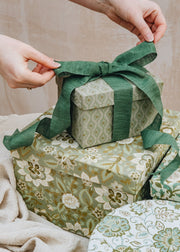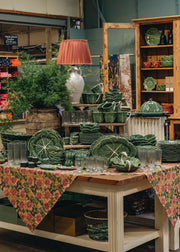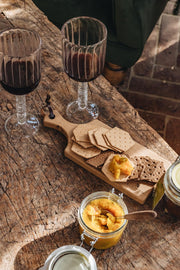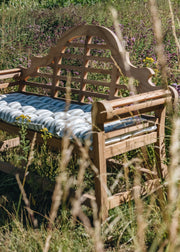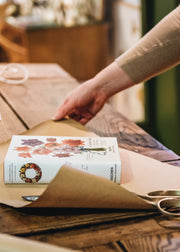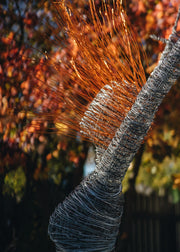How to: Care for your Christmas Tree
As the centrepiece to most homes’ festive celebrations, we all strive to keep our Christmas trees looking their best for as long as possible. By taking a few simple steps upon your tree’s arrival, you can help to ensure the longevity of needle retention and luscious colour all the way through to Twelfth Night.

A quick myth debunking for starters: purchasing your tree later in the season does not always guarantee that the tree will be fresher closer to Christmas. We always recommend choosing your cut trees as early as possible, as the sooner they are brought home and the steps below are followed, the fresher it will be for a longer duration.
Firstly, saw 2cm from the base of your tree once you bring it home and place in a bucket of water outside or in a cool spot. Additionally, you could score the bark roughly at the base of the tree to maximise water absorption, however, do not remove any bark completely.
When you are ready to bring your tree inside, choose a cool spot away from sources of heat. Once positioned, ensure that the water reservoir in your chosen stand is topped up daily with water. You could also mist the foliage to keep it fresh, provided you are not using paper decorations.

Lodge Pole Pine
Pot grown trees are the ideal recyclable tree as they can be used year after year. When Christmas comes around, try to leave your tree outside for as long as possible, as any time above two weeks indoors will ‘break its dormancy’ (meaning it will think it is spring). When you do bring your tree inside, again, choose a cool spot away from sources of heat, and stand in a tray of water that can be topped up regularly.
Our online selection of cut and potted trees
The sustainability of our cut trees is extremely important. All our trees are ‘field grown’ in the British Isles and each cut tree is replaced. After Christmas, if you can, turn the tree into chippings - useful for footpaths or woodland areas. Most people, however, use a free service laid on by local authorities who will collect Christmas trees at an appointed time and place before turning them into chippings for council use.
For your potted trees, when the time comes to put them back outside, take a moment to repot into a slightly larger container with John Innes No.3 and some mixed in bark chippings. When re-potting, do ensure that the pot has sufficient drainage to avoid root rot.
